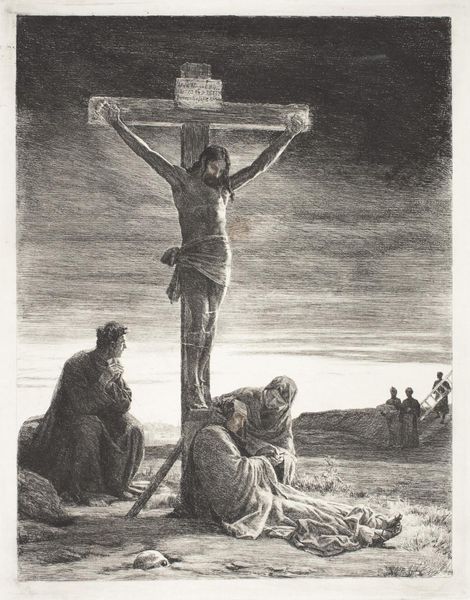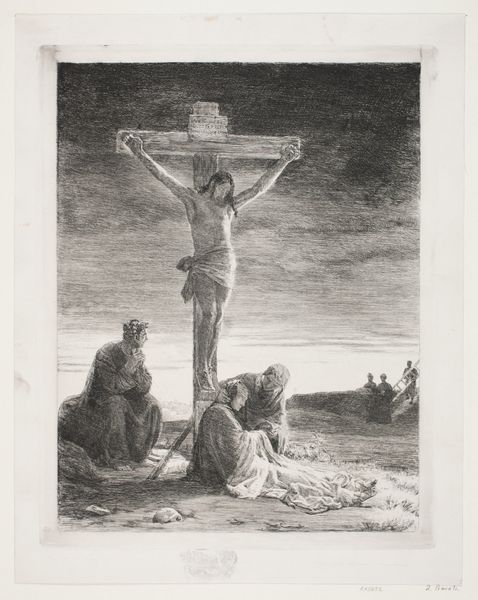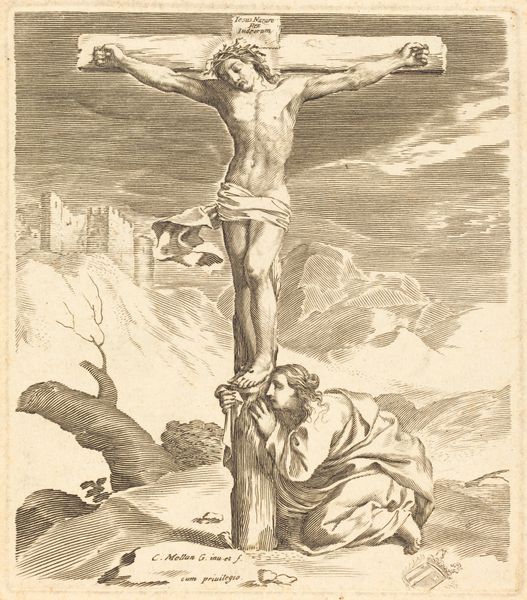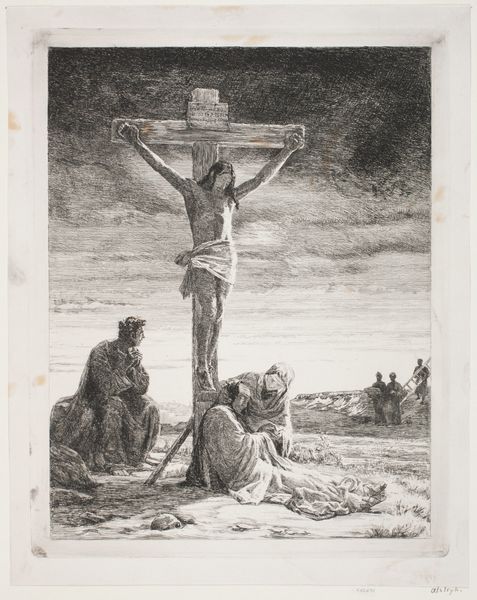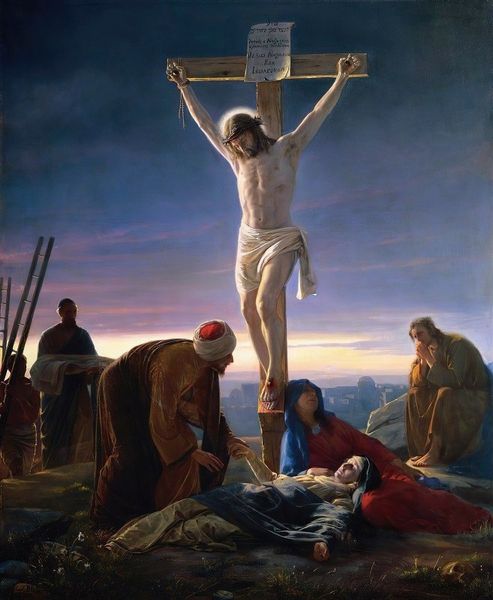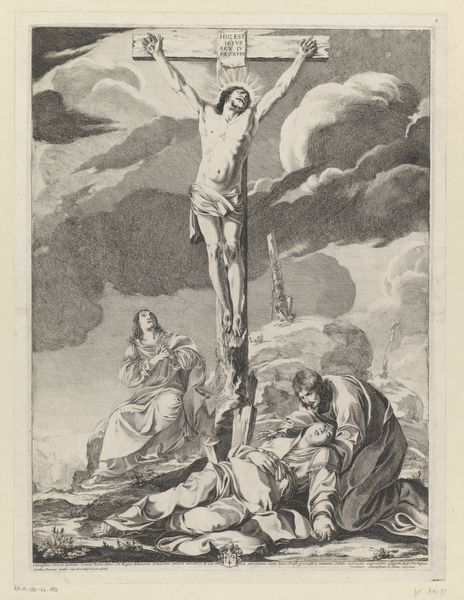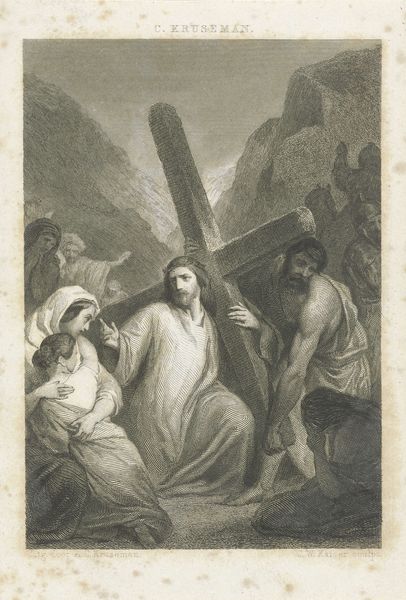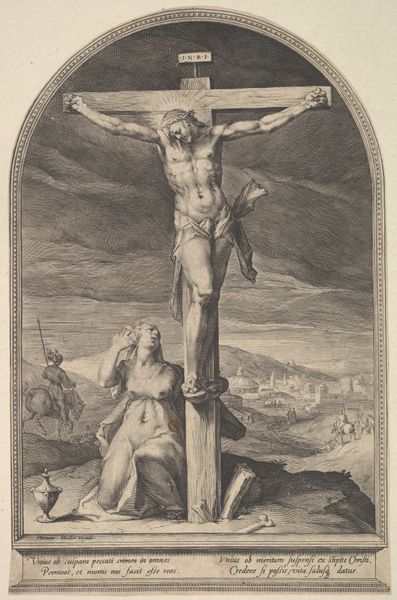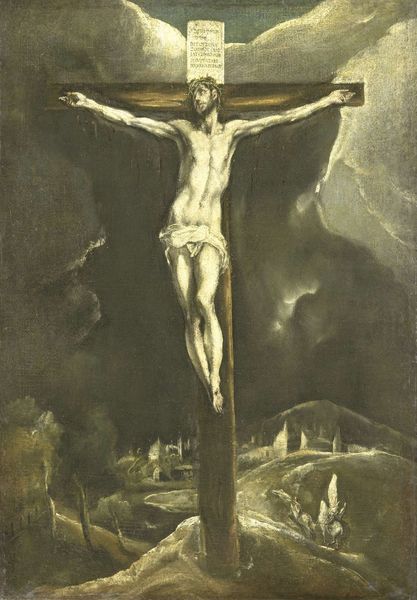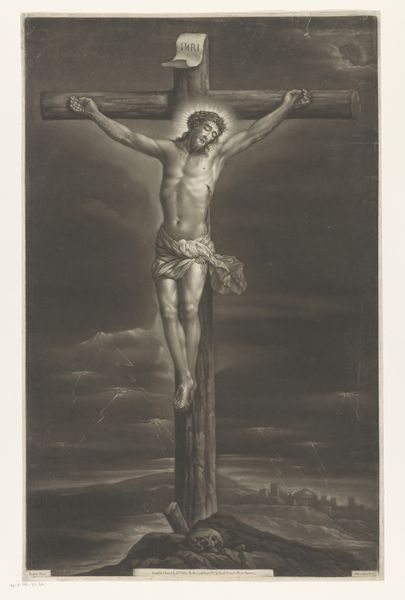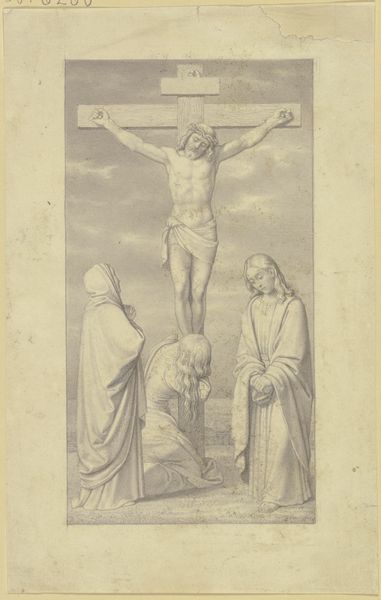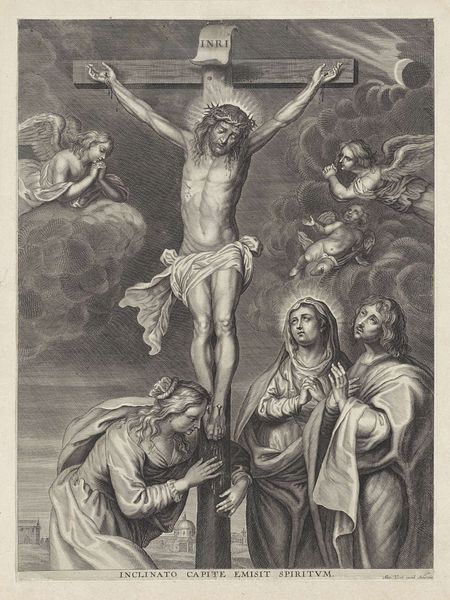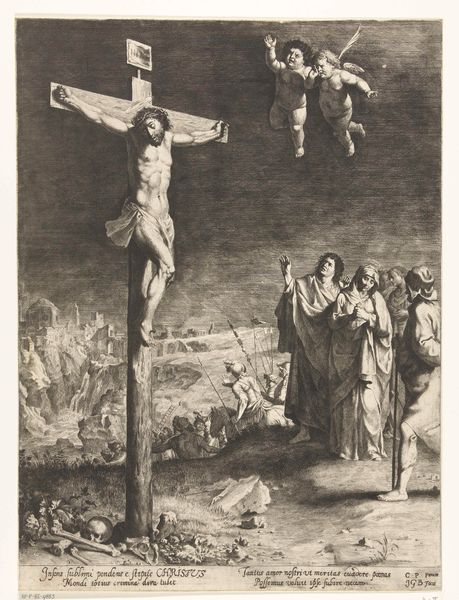
drawing, charcoal
#
drawing
#
narrative-art
#
landscape
#
charcoal drawing
#
figuration
#
pencil drawing
#
charcoal
#
history-painting
#
academic-art
Dimensions: 765 mm (height) x 610 mm (width) (bladmaal)
Curator: This powerful drawing is Carl Bloch’s “Christ on the Cross,” created in 1884. It’s a compelling example of his narrative work. What’s your initial take? Editor: Bleak. Utterly bleak. The charcoal really accentuates the desolation, the suffering seems so immediate. Curator: Absolutely. Bloch’s masterful use of charcoal creates a starkness that reinforces the gravity of the scene. You really sense the material suffering of labor that this represents: not only the historical work involved in producing this image, but the labor of suffering the historical figures in this event are experiencing. Look at the texture; you can almost feel the roughness of the wood, the weight of Christ’s body. Editor: And the socio-political undercurrents of displaying this scene; it was executed during a time of increasing secularization in Europe. I imagine its reception would have been quite loaded. The art institutions showcasing works like these certainly contributed to complex discussions about faith and tradition. Curator: Indeed. And the scale! You get an acute awareness of Christ’s physical ordeal when encountering this drawing, but, I see that your comment about secularization also sheds light on another labor relation here: who buys the image? Why? Who consumes the narrative of Christ and his death, and what do they intend to communicate by owning it and exhibiting it? Editor: Furthermore, consider where it's now housed, the Statens Museum for Kunst, a national art museum. It is a space for Danish cultural heritage but it’s equally enmeshed with institutional power and influence. The decision to preserve and exhibit this work contributes to a continued conversation, shaped by the curators themselves, about its ongoing cultural significance. Curator: Very well put. It speaks volumes about how we choose to remember and represent critical turning points in human history and the role the artist plays in its depiction. Editor: In the end, this dialogue reveals how Bloch's “Christ on the Cross,” is so much more than a religious image. Curator: Precisely; it is a multifaceted engagement with faith, power, labor, and materiality, constantly renegotiated through time.
Comments
No comments
Be the first to comment and join the conversation on the ultimate creative platform.
